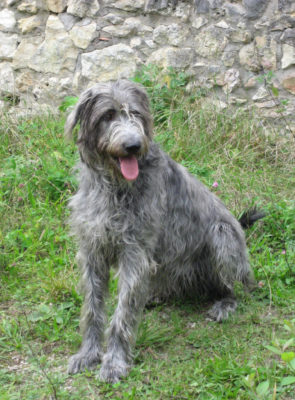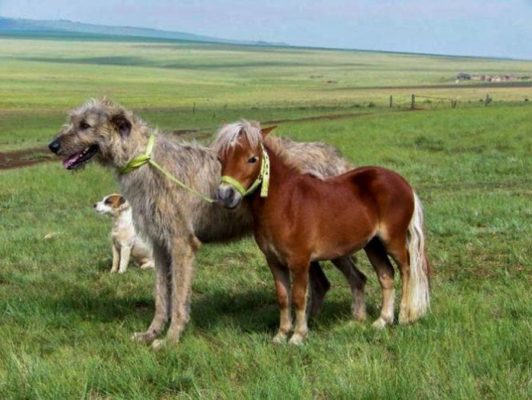Irish Wolfhound
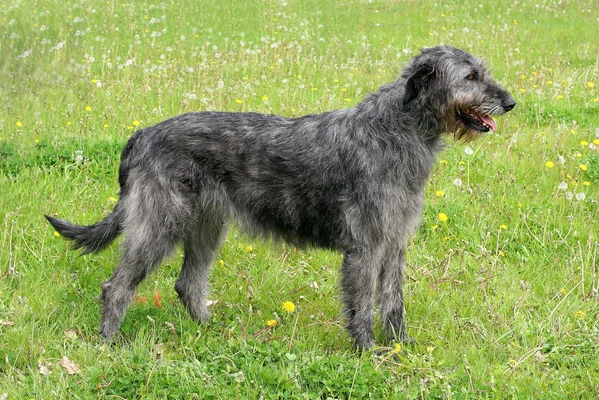
Despite its impressive size, the Irish Wolfhound has an easy-going character. The dog is quite intelligent and sensitive: it can easily recognize a friend and a foe. To other animals and all people, the dog will be treated kindly. But in case of trouble, it can protect itself and its master.
Table of Contents
Breed Information
| Another Name | Irish Greyhound, Cú Faoil |
| Origin | Ireland |
| Height | Males 75-90 cm Females 71-79 cm |
| Weight | Males 45-55 kg Females 40-50 kg |
| Fur | Stiff, medium length |
| Color | White, ginger, gray, pale, black |
| Lifespan | 10 years |
| FCI Classification | Sighthounds |
| Group | Hunting dogs |
| Price | $1500-2600 |
Breed Photos
Origin History
The Irish Wolfhound is truly the tallest breed of dog in the greyhound group. The Wolfhound has an amazing history as an ancient military dog and is the centerpiece of many legends. It is believed that Irish Wolfhounds originally appeared in Ancient Egypt 3,000 years before our era.
However, dogs of this breed were introduced into Ireland by Celtic tribes some 300 years before Christ. The Celts needed such dogs to protect livestock from wolves, which were very numerous at the time.
From the Middle Ages to the 17th century, Irish wolfhounds were extremely popular. Dogs were presented as a gift or payment for services rendered. For example, in 1641, several wolfhounds were presented to the French Cardinal de Richelieu. These amazing dogs were imported into many countries, where they were also highly valued. The dogs were then involved in hunting deer, bears, and other large animals. During wars, Irish Wolfhounds fought bravely for the victory of their masters: they did not need much effort to push the enemy off the horse.
The breed appeared in the homes of Edward III, Henry VIII, and Elizabeth I. By the end of the eighteenth century, British wolves had been exterminated to extinction, which deprived the Irish Wolfhound dogs of demand. Moreover, they were on the verge of extinction. The action was taken to revive the breed by a determined enthusiast, Captain George Graham. He obtained some of the wolfhound breed’s remaining representatives, used the blood of Deerhounds, German Great Dane, Scottish Greyhounds, and Pyrenean dogs. As a result, he managed to achieve success inbreeding. Today, Irish Wolfhounds are once again popular and much loved, just as many centuries ago.
Appearance
The Irish Wolfhound is a giant dog, as its length at withers can reach up to 90 cm. Despite its powerful appearance and height, the dog is graceful and does not give a clumsy impression. Its elegant movements lend a certain royal charm. The slender Irish Wolfhound with a straight back looks imposing.
The dog has a muscular build, a broad chest, long, strong paws. The dog’s muzzle is narrowed; you can see a smooth transition from the broad forehead to the nose. The ears are floppy. The tail is long, hangs playfully, slightly curved at the end. The Wolfhound has a coarse, stiff coat that is longer in the chin and above the eyebrows than in other parts of the body.
Character
Despite its impressive size, the Irish Wolfhound has an easy-going character. The dog is quite intelligent and sensitive: it can easily recognize a friend and a foe. To other animals and all people, the dog will be treated kindly. But in case of trouble, it can protect itself and its master.
The Irish Wolfhound is reverent to his household and can get along even with a cat. The dog hardly tolerates loneliness, so you should not leave it for a long time at home and go away. Due to its calm nature, the Irish Wolfhound demands the same treatment. The animal does not like it to be yelled at or to be physically forced. If you have small children, this dog will love them with all its heart because wolfhounds never disregard children. The character of the Irish Wolfhound makes him a loyal companion.
Care
The Irish Wolfhound does not need a lot of grooming. Periodically you will need to comb out the hair, bathing preferably once every three months or as needed. The ideal place to keep the dog is a spacious house with a private yard. After all, a family living in a small apartment will not be easy to be crammed with a dog the size of a pony. Since the Irish Wolfhound is very sociable, living in an enclosure may harm him. To keep him from getting bored, he needs to spend a lot of time outdoors, where he can release his energy.
Training
Raising an Irish Wolfhound does not require much effort because these dogs are obedient and intelligent, helping them quickly learn commands. It is necessary to explain the rules of behavior to the dog. Already in childhood, they must be weaned from the habit of biting the owner’s hands. After all, the Irish Wolfhound has the genes of cruelty due to their past – you never know when this giant will decide to use it. Under no circumstances should you raise your voice at the dog and show physical force. You need to show them who’s boss, and then the dog will respect you, obey you, and love you infinitely.
Common Diseases
At least once a year, you should take your pet to the veterinarian for a preventive examination because the Irish Wolfhound is prone to many diseases. The Irish Wolfhound suffers from the following musculoskeletal disorders:
- hip dysplasia;
- dysplasia of the elbow joint;
- osteochondrosis;
- osteosarcoma.
Nutrition
The Irish Wolfhound is not fussy about food. Store-bought dog food contains all the necessary nutrients. Do not allow overeating because being overweight will negatively affect the weak health of the pet.
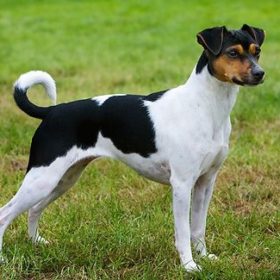 Brazilian Terrier
Brazilian Terrier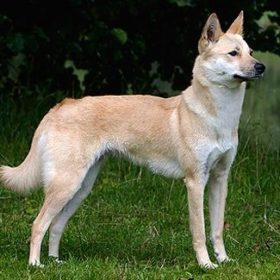 Korean Jindo
Korean Jindo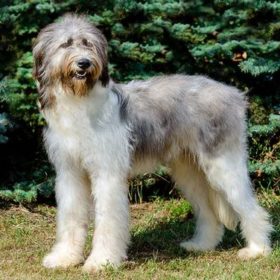 Romanian Mioritic Shepherd Dog
Romanian Mioritic Shepherd Dog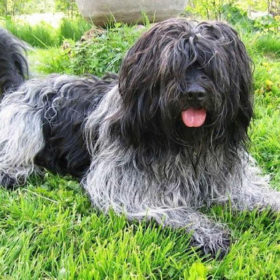 Schapendoes
Schapendoes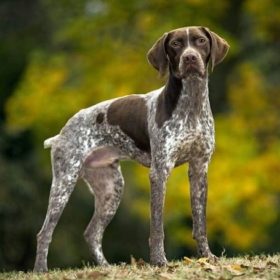 Braque Francais (Gascogne)
Braque Francais (Gascogne)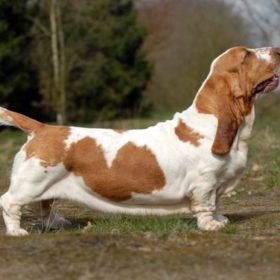 Basset Hound
Basset Hound